Why does Russia need the Caucasus?
The Caucasus is us!
Here, in the Kuban, it is known that the Caucasus, it is not only Chechnya, Dagestan and Ingushetia, this, including our Krasnodar Territory and Stavropol. Despite the fact that the North Caucasus Federal District (NCFD) was isolated from the Southern (SFD) three years ago by decree of President Medvedev, the Kuban, as well as Adygea, was and remains part of the Caucasus. Therefore, in our article we will assign the 9 regions to the Caucasus: Stavropol, Chechnya, Kabardino-Balkaria, Dagestan, Ingushetia, North Ossetia - Alania, Karachay-Cherkessia, Krasnodar Territory and Adygea. Sometimes even some southern districts of the Rostov region are referred to the Caucasus, but due to the non-obviousness of such a reference, we will not do that.
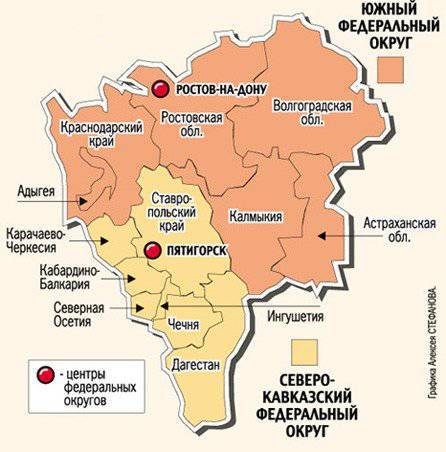
It’s not even more important for us that the Krasnodar Territory belongs to the Caucasus from an encyclopedic point of view, it is much more important that the Caucasus has united many nationalities in a relatively small territory, and this Caucasus does not have a regional division.
2011 15 109 citizens of the Russian Federation lived in the Caucasus on the territory of the Caucasus. And this, not less and less, 035% of the total population of Russia (10,6 million per 142,9 year).
It is often assumed that the entire population of the Caucasus form 30 nationalities. This is not quite true. Here we are talking more about languages. Various scholars in the Caucasus distinguish from 30 to 40 languages, not counting the numerous dialects and dialects. But there are much more nationalities and nationalities. In Dagestan alone, there are more than 100. Of course, the overwhelming part (absolute and relative majority) is the Russian population. Throughout the Caucasus resides - 50,66% Russian. Separately, by districts in 2010, the situation looked like this: SFD - Russians 86,1 (second largest group - Armenians (3,1%)), North Caucasus Federal District - Russians 30,26 (second largest group - Chechens (14,17%)).
Who feeds the Caucasus?
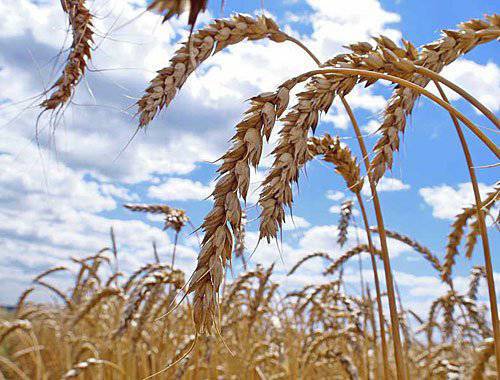
Food base
In 2011, 95 million grain crops were harvested in Russia; about 20 million were harvested only in the Caucasus, i.e. 21% of grain produced 10,6% of Russian citizens living in the Caucasus.
According to RIA Dagestan, in the North Caucasus Federal District alone (ie, 7 regions without Krasnodar Territory and Adygea!) 45% of grapes grown in the Russian Federation, more than 10% of grain, fruits, berries and vegetables, more than 5% of sugar beet are produced . The county constituent accounts for 11% of cattle, more than 40% of sheep and goats. The region produces more than 44% wool.
NCFD for 2010 year is: 129687 operating enterprises, the cost of fixed assets in the amount of 2,3 trillion. rubles, agricultural production in the amount of 2,6 trillion. rubles.
Hydrocarbons
For experts, it is no secret that the North Caucasus region is the oldest and most explored petroleum province of Russia. Stories oil production here for over 150 years. This province includes deposits located in the Stavropol and Krasnodar Territories, the Chechen Republic, the Rostov Region, Ingushetia, Kabardino-Balkaria, North Ossetia and Dagestan.
Also, specialists know the secret of local oil - its special quality (low content of hydrogen sulfide). From it you can get the best grades of fuel, oils and other petroleum products needed for aviation and space technology, modern weapons and civilian technology. None of this can be produced from the oil of most fields in the world. The oil of Siberia and the North is worse than Dagestan and Chechen by an order of magnitude. Dagestan light, low-sulfur oil with a high content of methane hydrocarbons is almost completely exported (98%) through the port in Novorossiysk. In return, oil products are imported into the republic.
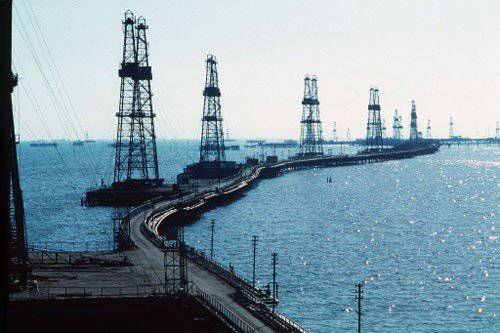
A few years ago, Italian journalist Francesco Bigazzi said: “Dagestan after the Persian Gulf is considered the most important oil region on the Eurasian continent. There is no doubt: who controls Dagestan controls the Caspian oil. ”
His opinion was expressed by the observer of the Internet publication Interfax, Alexander Sidorov:
“The Italian is not exaggerating: the potential oil fields in the republic are truly gigantic. Although it seems to be in the entire history of oil production, 52 deposits have been discovered here, and all of them are mostly small. During the operation of them extracted about 40 million tons of oil. The peak production level - 2,2 million tons was in 1970 year. A quarter of the deposits have now been completely depleted, with current recoverable reserves of about 14 mln. Tons. Their main part is located on land. It would seem, how can this be compared with the Persian Gulf? However, if we talk about prospects, official estimates of the resources of the republic, according to modest official data, reach 273 million tons of oil and condensate. According to Russian scientists, they are estimated at no less than 200 billion dollars. Today, only 30% of land and only 1% of the Caspian Dagestan shelf, where 450-500 million tons of standard fuel is predicted is explored here. ”
A completely useless region, isn't it? But let's move on to the favorite topic of "separators". To subsidies.
Subsidies
All subsidies to regions in 2011 year: 1 470 235 210 000 rubles.
Let's look at the example of the NCFD (7 of the Caucasus regions). Here he is only the fourth of eight. Here is the order of numbers:
1. Central Federal District - 275 177 023 001 rubles per district (7 157 rubles per head)
2. PFD - 255 894 076 965 rubles per district (8 564 rubles per head)
3. Siberian Federal District - 202 964 201 329 rubles per district (10 542 rubles per head)
4. North Caucasus Federal District - 194 739 045 930 rubles per district (20 631 rubles per head)
5. DFO - 186 359 773 486 rubles per district (29 651 rubles per head)
6. SFD - 131 696 711 974 rubles per district (9 507 rubles per head)
7. NWFD - 127 920 276 556 rubles per district (9 388 rubles per head)
8. UFD - 95 484 103 764 rubles per district (7 899 rubles per head)
As we see, even in terms of subsidies per capita of the population, the North Caucasus Federal District is not the first, but the second. But no one wants to give the Far East.
Contribution to the economy
One of the most important general indicators of the region’s economic activity is the gross regional product, i.e. the amount of value added in the region's economy. Simply put, this is a regional contribution to the well-known GDP, minus some general-purpose expenditures, which in many ways reduces the CDF in the Caucasus regions.
The average GRP of the Caucasus regions (9 regions) according to 2010 year data is 130 813 rubles per capita. This is more than in the 15 regions of our country!
For example, the Kirov region showed the level in 123 516 rubles per capita, the Altai Republic - 105 049, the Ivanovo region - 92 306, Kalmykia - 84 150.
Federal Districts GRP per capita: SFD - 165 578,8 rubles, North Caucasus Federal District - 94 465,2 rubles per head.
At the same time, it would be wrong to deny the fact that a number of lagging regions on GRP are concentrated in the Caucasus. The minimum in Russia shows Ingushetia - 52 130 rubles per capita. That, in general, is not surprising. Try to create an effective economy in the territory where there is a high probability of terrorist attacks. The task is not easy. Such regions, with the increased attention of the center, will develop, but still doomed to be lagging behind.
The experience of the near abroad
But let us pay attention to Ukraine, so close to us in spirit. During the same period (translated from hryvnia to ruble at the current exchange rate per capita), a number of regions showed the following indicators: Lviv region - 59 851 ruble, Ivano-Frankivsk region - 54 219 rubles, Chernivtsi region - 40 039 rubles. Agree, figures comparable to Ingushetia. Somewhere more, somewhere less.
So why in Ukraine is not the question of the separation of these regions? Even if you leave Lviv and Ivano-Frankivsk regions alone, Chernivtsi shows the worst result in the country! And still located on the edge of the country. Why not give it to Romania, let them suffer from it.
But no, no one is in a hurry to give Chernivtsi. On the contrary, nationalistic and sometimes neo-fascist tendencies are strong in these not the most economically strong regions. It is there that they want to demolish the monuments to Soviet soldiers-liberators. And the national party "Freedom" goes as the locomotive of this movement. And to separate, thanks to such “well done”, these regions do not want, they want to carry out propaganda throughout the territory of Ukraine. They only want to join!
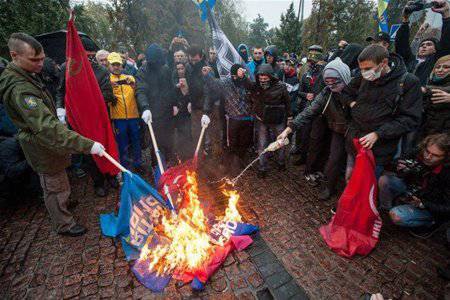
Strange isn't it? The economic level is not high neither in Ingushetia nor in the Chernivtsi region. But our pseudo-nationalists want to cut a piece from their country, and national minorities, praising Bandera, on the contrary, begin a march across Ukraine under the slogan “No to Muscovites!”.
Everything is very simple. Not a single sober-minded leadership will ever give up a piece of the territory of their country, even, at first glance, the most useless. And as we have seen, the Caucasus not only eats, but also makes a very tangible contribution to the development of the economy. Russia does not feed the Caucasus. Russia feeds Russia, all this is the national economy.
Only separatists can call to separate regions from Russia in whatever condition they are in. At the same time, any integration and unification of efforts in the territory of the Russian Federation and the post-Soviet space causes horror among separatists and pseudonationalists. No wonder and personal, just a cold calculation.
Here we have not touched upon yet another whole important aspect. The geostrategic significance of the Caucasus. We only recall that the Caucasus:
- It is a corridor for the supply of hydrocarbons from Central Asia and the Caspian Sea to Turkey and to the ports of the Black Sea;
- It is a region immediately adjacent to significant oil fields in the Caspian;
- This is the node where the most important communications along the East-West and North-South axes intersect;
- from a military point of view, it is a profitable springboard for the deployment of ground forces, aviation and fleet.
Least.
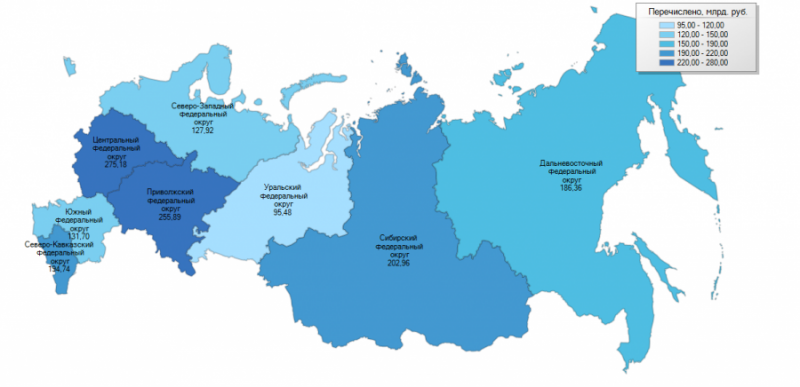
Information